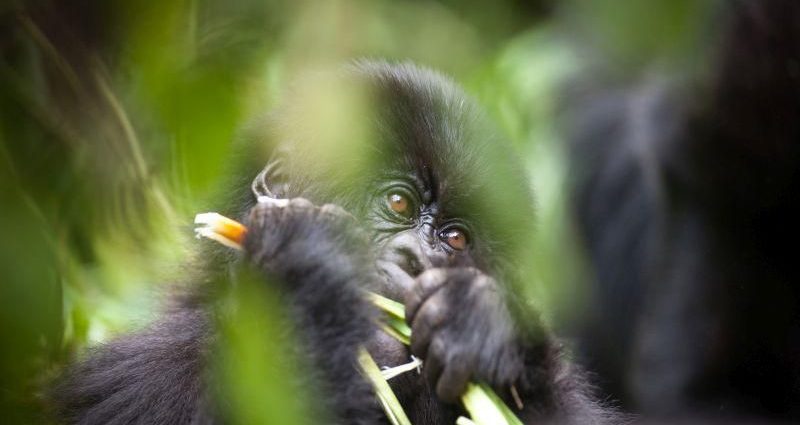WEDNESDAY, Oct. 26, 2022 (HealthDay News) — Despite the presence of gorilla trekkers in their habitat, endangered gorillas in the region surrounding East Africa’s Virunga Volcanoes do not have human herpesvirus, researchers say.
The Gorilla Doctors team was able to assess the region’s mountain gorillas in a noninvasive way, simply watching the animals as they walked through the forest.
As the gorillas chomped on vegetation such as wild celery and tossed away the stalks, researchers would retrieve the discarded plant and record the name of the gorilla in this conservation area, where they know each one. The plant leavings would be drenched with enough saliva to analyze.
Scientists from the University of California, Davis tested the gorilla saliva for orally shed pathogens to rule out the presence of human herpesviruses among these primates.
“We were able to do this study entirely using chewed plants,” said study lead author Dr. Tierra Smiley Evans, an epidemiologist and wildlife veterinarian at the UC Davis School of Veterinary Medicine.
“That allowed us to collect specimens from every known, habituated mountain gorilla in Uganda and Rwanda. This shows we can monitor gorillas — and potentially other primate species — over time, noninvasively, at the individual level and help answer questions regarding their conservation,” Evans said in a university news release.
It’s an important mission. While herpesvirus may cause minor symptoms in humans, it could be more dangerous if introduced to other species.
Gorilla Doctors is a partnership between the Karen C. Drayer Wildlife Health Center, within the veterinary school, and the Mountain Gorilla Veterinary Project. It monitors the health of wild, endangered mountain gorillas living in Rwanda, Democratic Republic of Congo and Uganda. It also provides veterinary care for those who are injured or ill.
The wild gorillas are routinely exposed to humans through gorilla trekking, a popular tourist activity that involves hiking through the gorillas’ terrain.
Gorilla Doctors and gorilla management authorities have set certain guidelines to limit the distance between humans and gorillas in the park. These appear to have helped prevent the spread of disease.
“Gorilla Doctors research has proven that human viruses cause respiratory disease in endangered mountain gorillas,” said co-author Dr. Kirsten Gilardi, executive director of the Gorilla Doctors and director of the wildlife health center.
“Dr. Evans’ research findings that human herpesviruses were not detected in gorilla saliva was reassuring. It’s further evidence that park rules for gorilla visitation, like wearing face masks and keeping a minimum distance of 23-33 feet, are effective in reducing the risk of transmission of human diseases to mountain gorillas,” Gilardi said in the release.
The study findings were published Oct. 19 in the American Journal of Primatology.
More information
For more on gorilla conservation, click here.
SOURCE: University of California, Davis School of Veterinary Medicine, Oct. 20, 2022
Copyright © 2025 HealthDay. All rights reserved.

